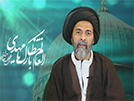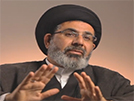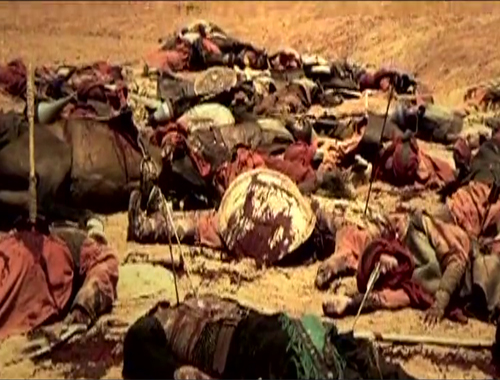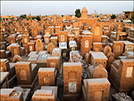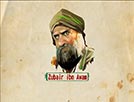Chapter 11-Historiography on the Eve of the Safawid Era
- Details
- Hits: 1998
Chapter 11
Historiography on the Eve of the Safawid Era
--------------------------------------------------------------------------------
After the glorious era of the Islamic civilisation till the 6th and 7th centuries AH, compilations in most fields of scholarship were faced with repetition, stagnation and useless descriptions, most of which lacked scientific methods. Of course, there were rare cases, which should be considered as exceptions. For example, during the Mongol Ilkhanid era the science of historiography enjoyed a high position and works like JÄmi’ al-TawÄrÄ«kh, JahÄngushÄ-ye JuwaynÄ« and TÄrÄ«kh-i HÄfiz-i Abru are indications of this high status. After that there is no sign of such works in the eastern lands of Islam, although in the western parts, especially in Syria and Egypt, scholars such as DhahabÄ«, SafadÄ«, Ibn Hajar, Ibn ‘ImÄd HanbalÄ«, SÄlihÄ« ShÄmÄ«, MaqrÄ«zÄ«, KutubÄ« and several others flourished. But neither the Sunnis nor the Shi‘ites compiled valuable works like those they had written during the first few centuries such as the TÄrÄ«kh NayshÄbur, TÄrÄ«kh Bayhaq, TÄrÄ«kh JurjÄn, TÄrÄ«kh Rayy and other similar books. Historiography during this era, apart from regional history about certain dynasties, was faced with stagnation.
In this period nothing significant was accomplished in the history of Islam either. The Sufis who dominated the east during these times wrote a few works in the 9th century on the esoteric ranks of their spiritual leaders and the chains of their shaykhs, which naturally included parts of the history of Islam and the Infallible Imams (‘a). In these histories due to the dominance of the Sufi viewpoint a type of non-experimental historiography became the fashion with the compilations mainly tracing the classes and grades of saintly figures over the past few centuries. The lives of their spiritual leaders take shape outside the normal circle of people’s lives and everything is rather exaggerated manyfold beyond reasonable limits. A long list of such works which lack scientific value from the viewpoint of historiography and which lost whatever worth they had with the disappearance of Sufism, have been mentioned in the history section of Storey’s Persian Literature.
Some of the best known of these books written by the Sunni Sufis, from which people could derive certain historiographical perspectives, are al-Maqsad al-AqsÄ fÄ« Tarjamah al-MustaqsÄ (we have no information of the original Arabic version and what is available is only the Persian translation made by KamÄl al-DÄ«n Husayn KhwÄrazmÄ« in the 9th century AH);[55] al-MujtabÄ min KitÄb al-MujtabÄ fÄ« SÄ«rah al-MustafÄ;[56] Siyar al-NabÄ« by JÄmÄ«;[57] Mawlud-i Hazrat-i RisÄlat PanÄh MuhammadÄ« by JÄmÄ«;[58] ShawÄhid al-Nubuwwah li Taqwiyah YaqÄ«n Ahl al- Futuwwah also by JÄmÄ«i[59] (this is a renowned work and hundreds of handwritten copies of it are available); BayÄn HaqÄ’iq AhwÄl Sayyid al-MursalÄ«n by JamÄl al-DÄ«n Ahmad ArdistÄnÄ« known as Pir JamÄl SufÄ«;[60] Ma’Ärij al-Nubuwwah fÄ« MadÄrij al-Futuwwah by Mu‘Ä«n al-DÄ«n FarÄhÄ« (d. 907);[61] Rawzah al- AhbÄb fÄ« Siyar al-NabÄ« wa al-Al wa al-AshÄb by AmÄ«r JamÄl al-DÄ«n AtÄ’ullÄh bin FazlullÄh HusaynÄ« DashtakÄ« written in the year 900 which was also very renowned;[62] Tuhfat al-AhibbÄ fÄ« ManÄqib Al al-‘AbÄ’ by the same author which is on the merits of the Ahl-al-Bayt (‘a);[63] AthÄr-i AhmadÄ« by Ahmad bin TÄj al-DÄ«n Hasan bin Sayf al-DÄ«n IstarÄbÄdÄ« These were some of the works of the Twelver Sunnis which have been published recently by the Mirath-i Maktub Publications of Tehran through the efforts of Mir Hashim Muhaddith.
There are several other Sufi works of sacral nature written in either prose or poetry, of which mention could be made of NÄdir al-Mi‘rÄj wa Bahr al-AsrÄr, Hamleh-ye HaydarÄ«, and MuhÄrabah-ye GhazanfarÄ«. These books have been mentioned because of their influence on Shi‘ite historiography of the period. A clear example in this regard is MullÄ Husayn KÄshifÄ«’s Rawzah al-ShuhadÄ’ which has accurately transferred to Iranian Shi‘ism the viewpoints prevailing in Herat and was itself an influential text among the Shi‘ites for several centuries.
Notes:
[55] Storey, p. 775.
[56] Ibid, p. 791.
[57] Ibid, p. 92.
[58] Ibid, p. 795.
[59] Ibid, pp. 797, 802.
[60] Ibid, pp. 792-793.
[61] Ibid, pp. 803, 810.
[62] Ibid, pp. 810, 818.
[63] Ibid, p. 818.


